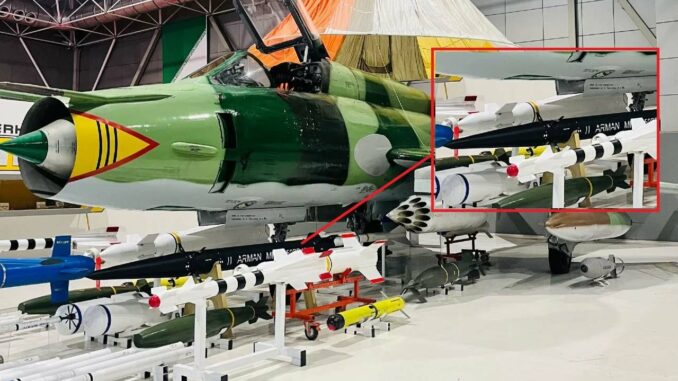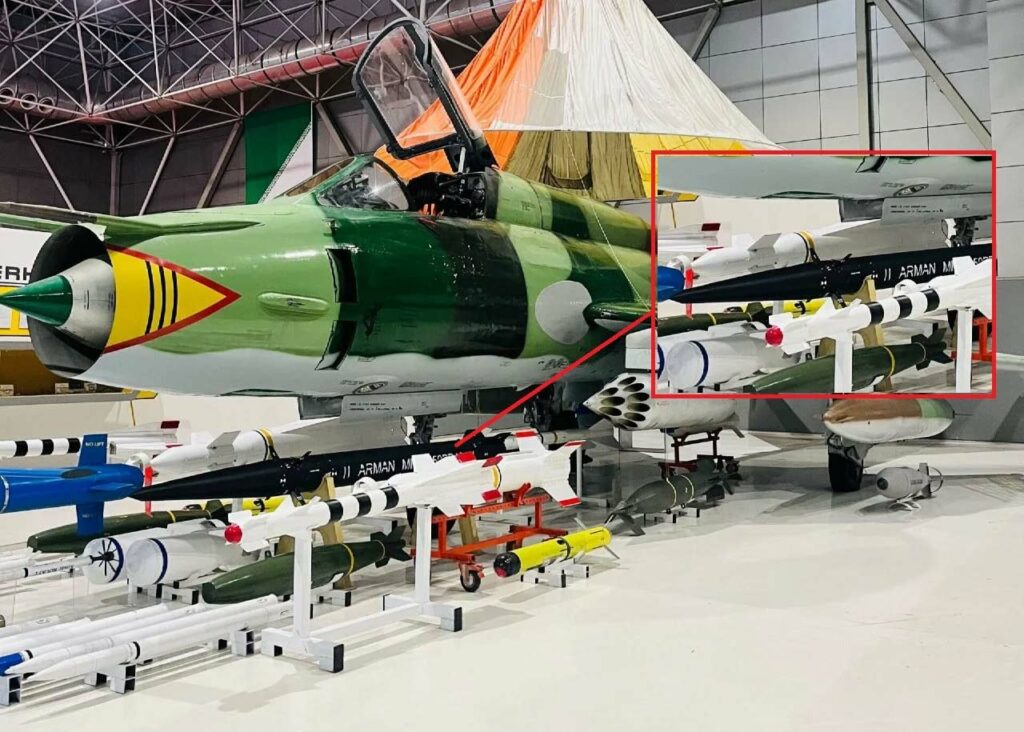
Iran unveils the Arman ballistic missile, a technological leap forward for its air force, boosting its defensive and offensive capabilities.
Iran has unveiled its new air-launched ballistic missile (ALBM), the Arman, adapted from the Ababil (al-Fat’h) short-range ballistic missile. Equipped on a Su-22 aircraft, this missile symbolizes a significant step forward for Iran’s air arsenal, reflecting a marked evolution in air warfare strategy and regional security.
At an exhibition of the Islamic Revolutionary Guards Aerospace (IRGC), Iran lifted the veil on a significant breakthrough in its military technology: the air-launched ballistic missile (ALBM) named Arman. This event marks an important milestone in Iran’s ongoing effort to strengthen its air combat capabilities, and potentially alters the regional balance of power.
The Birth of the Arman: A Giant Step for Iran
The Arman is an adaptation of the Ababil (al-Fat’h) short-range ballistic missile, powered by a solid rocket motor. This innovation represents a significant technical advance, demonstrating Iran’s ability to develop sophisticated weapons. By fitting it to a Su-22, Iran is diversifying its arsenal and potentially improving its offensive range.
Comparison with the Russian Kinzhal
The Arman, often compared to the Russian Kinzhal missile, shows how Iran is following global trends in missile development. Although there are technical differences between the two, the presence of the Arman suggests a rise in Iran’s military air capabilities, similar to that seen in Russia.

A Paradigm Shift in the Region
The introduction of the Arman into Iran’s arsenal has profound implications for regional security. It strengthens Iranian deterrence and alters the strategic calculations of neighboring countries. This development also raises questions about the regional arms race and growing geopolitical tensions.
The addition of the Arman to the Iranian air force represents a change in air warfare doctrines. This missile, with its ability to be launched from an aircraft, offers Iran greater operational flexibility and the possibility of striking with greater surprise and at greater distances, thus redefining air combat strategies in the region.
A New Deal in Defense Policy
Iran’s deployment of the Arman could prompt neighboring nations to review their defense policies and military capabilities. This could lead to a chain reaction, with countries seeking to develop or acquire similar technologies to maintain the regional balance of power.
Although the Arman represents a significant development, Iran must overcome various technical and operational challenges to integrate it effectively into its arsenal. These include crew training, system maintenance, and integrating the missile into existing combat strategies.
A Factor in Tension and Negotiation
The presence of the Arman in Iran’s arsenal could affect international relations, particularly with Western countries. This development may be perceived as a military escalation by some, while offering Iran an additional negotiating tool in international dialogues on security and non-proliferation.
The Arman is probably the beginning of a series of Iranian military innovations. Iran may continue to develop new weapons and technologies to strengthen its regional position, indicating a continuous and dynamic evolution of its military capabilities.
Iran’s unveiling of the Arman represents a significant moment in the country’s military history and alters the regional security landscape. This ALBM highlights not only Iran’s technological progress, but also its determination to improve its combat capabilities and influence the balance of power in the region. As the world observes how this development will affect regional dynamics and international relations, Iran is positioning itself as an increasingly influential player in the arms race and modern military strategy.
War Wings Daily is an independant magazine.